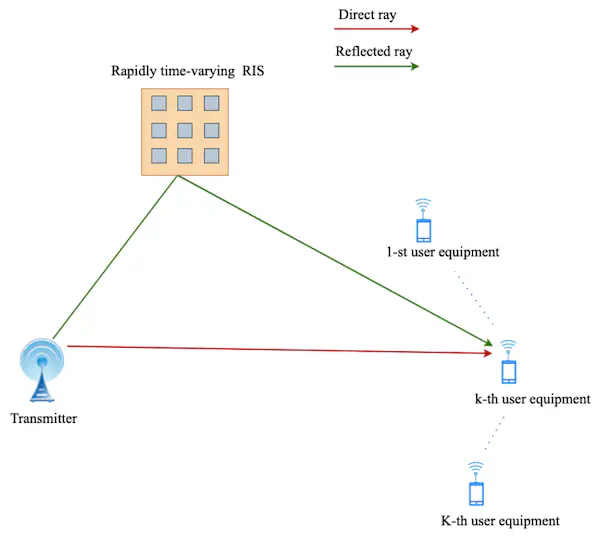Rapidly time-varying reconfigurable intelligent surfaces for downlink multiuser transmissions

Abstract
Amplitude, phase, frequency, and polarization states of electromagnetic (EM) waves can be dynamically manipulated by means of artificially engineered planar materials, composed of sub-wavelength meta-atoms, which are typically referred to as metasurfaces. In wireless communications, metasurfaces can be configured to judiciously modify the EM propagation environment in such a way to achieve different network objectives in a digitally programmable way. In such a context, metasurfaces are typically referred to as reconfigurable intelligent surfaces (RISs). Until now, researchers in wireless communications have mainly focused their attention on slowly time-varying designs of RISs, where the spatial-phase gradient across the RIS is varied at the rate equal to the inverse of the channel coherence time. Additional degrees of freedom for controlling EM waves can be gained by applying a time modulation to the reflection response of RISs during the channel coherence time interval, thereby attaining rapidly time-varying RISs. In this paper, we develop a general framework where a downlink multiuser transmission over single-input single-output slow fading channels is assisted by a digitally controlled rapidly time-varying RIS. We show that reconfiguring the RIS at a rate greater than the inverse of the channel coherence time might be beneficial from a communication perspective depending on the considered network utility function and the available channel state information at the transmitter (CSIT). The conclusions of our analysis in terms of system design guidelines are as follows: (i) if the network utility function is the sum-rate time-averaged network capacity, without any constraint on fair resource allocation, and full CSIT is available, it is unnecessary to change the electronic properties of the RIS within the channel coherence time interval; (ii) if partial CSIT is assumed only, a rapidly time-varying randomized RIS allows to achieve a suitable balance between sum-rate timeaveraged capacity and user fairness, especially for a sufficiently large number of users; (iii) regardless of the available amount of CSIT, the design of rapid temporal variations across the RIS is instrumental for developing scheduling algorithms aimed at maximizing the network capacity subject to fairness constraints.